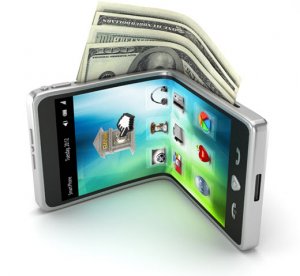Square is coming to Australia
Square, a prominent mobile payments firm, has expanded into the Australian market. The company has made its payment service available in the United States, Canada, and Japan, where it has found significant success in the past. While considered successful, Square has been experiencing some turbulence in recent months, largely due to falling stock prospects and growing competition in the mobile commerce space. The growing demand for new payment services in Australia may secure a brighter future for Square if it manages to effectively connect with consumers.
Company has managed to find success by expanding access to mobile commerce among consumers
Square launched in 2009, receiving strong support from several technology companies and organizations interested in mobile payments. The company had developed an accessory for mobile devices that allowed iOS and Android devices to make mobile transactions, even if they were not equipped with NFC technology. This accessory earned Square early popularity among consumers and put the company in direct competition with others that had developed similar accessories for mobile devices.
Square will be offering different products in Australia than it does in the US
 In Australia, Square will be selling its mobile card reader for $19. Merchants using Square’s mobile payments services will be charged 1.9% per transaction being made. This is somewhat different from what Square offers in the United States, where its mobile card reader is free, but merchants can purchase a full-sized point-of-sale system for $99. In the U.S., merchants are charged 2.75% per mobile transaction being made. Square has not yet announced plans to launch its new contactless payment reader in Australia, but may choose to do so in the future.
In Australia, Square will be selling its mobile card reader for $19. Merchants using Square’s mobile payments services will be charged 1.9% per transaction being made. This is somewhat different from what Square offers in the United States, where its mobile card reader is free, but merchants can purchase a full-sized point-of-sale system for $99. In the U.S., merchants are charged 2.75% per mobile transaction being made. Square has not yet announced plans to launch its new contactless payment reader in Australia, but may choose to do so in the future.
Company to compete with Apple in the Australian payments market
Australia is becoming a competitive mobile payments market, with several companies bringing their new payment platforms to the country. Recently, Apple released its payment service in Australia, which Square is set to compete with. Square may find a place in the market among small and medium sized retailers who want to engage mobile consumers more effectively, thereby securing a degree of success in Australia.
A recent report from BI Intelligence indicated that smartphone payments are still dominated by the same tech giants.
Mobile wallet tech using contactless payment technology will be used by approximately 148 million people around the world, said a new report that was published by Juniper Research, which also claimed that this format will be the leader in mobile device based transactions.
That said, it is clear that within that limited space, there are clear leaders that have already carved out their positions.
The Juniper Research report identified Apple Pay and Samsung Pay as the two top mobile wallet brands that have grabbed hold of the largest share of the smartphone payments market. In fact, together, they are believed to hold a 70 percent share of the number of customers who use that type of contactless payment service in stores. This suggests that those two firms could be the dominant figures in this market and may be able to keep a firmer hold on their portion of that space than newer entrants or older ones that have not been as successful at gaining user-ship.
Apple Pay leapt into the mobile wallet space quite strongly as it had been a greatly anticipated service.
 It launched as one of the first major entrants into the American market, which helped to ensure that it would build users more quickly than smaller players or later joiners. While Samsung didn’t arrive nearly as early, it still held onto a competitive advantage in the fact that it can be used at both NFC technology based terminals and those that are compatible with a magnetic stripe card. In Apple’s case, the mobile payments service can connect only with NFC readers.
It launched as one of the first major entrants into the American market, which helped to ensure that it would build users more quickly than smaller players or later joiners. While Samsung didn’t arrive nearly as early, it still held onto a competitive advantage in the fact that it can be used at both NFC technology based terminals and those that are compatible with a magnetic stripe card. In Apple’s case, the mobile payments service can connect only with NFC readers.
Firms invested in mobile payments are pushing hard to gain U.S. customers, but adoption has been slow. Most consumers have yet to be convinced that there is any great benefit to using their smartphones instead of their plastic credit cards, which they already find to be quite convenient. Moreover, many people still face the barrier of comfort when it comes to feeling that their sensitive personal data will be kept secure.
Moreover, the adoption of NFC technology based contactless payments is also holding back widespread use in the United States, as only 20 percent of American terminals are actually equipped to accept transactions through those mobile wallets.
 In Australia, Square will be selling its mobile card reader for $19. Merchants using Square’s mobile payments services will be charged 1.9% per transaction being made. This is somewhat different from what Square offers in the United States, where its mobile card reader is free, but merchants can purchase a full-sized point-of-sale system for $99. In the U.S., merchants are charged 2.75% per mobile transaction being made. Square has not yet announced plans to launch its new contactless payment reader in Australia, but may choose to do so in the future.
In Australia, Square will be selling its mobile card reader for $19. Merchants using Square’s mobile payments services will be charged 1.9% per transaction being made. This is somewhat different from what Square offers in the United States, where its mobile card reader is free, but merchants can purchase a full-sized point-of-sale system for $99. In the U.S., merchants are charged 2.75% per mobile transaction being made. Square has not yet announced plans to launch its new contactless payment reader in Australia, but may choose to do so in the future.
 It launched as one of the first major entrants into the American market, which helped to ensure that it would build users more quickly than smaller players or later joiners. While Samsung didn’t arrive nearly as early, it still held onto a competitive advantage in the fact that it can be used at both
It launched as one of the first major entrants into the American market, which helped to ensure that it would build users more quickly than smaller players or later joiners. While Samsung didn’t arrive nearly as early, it still held onto a competitive advantage in the fact that it can be used at both 